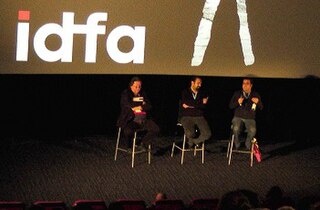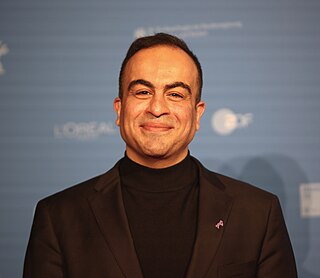
Ctesiphon was an ancient Iranian city, located on the eastern bank of the Tigris, and about 35 kilometres (22 mi) southeast of present-day Baghdad. Ctesiphon served as a royal capital of the Iranian empire in the Parthian and Sasanian eras for over eight hundred years. Ctesiphon was capital of the Sasanian Empire from 226–637 until the Muslim conquest of Persia in 651 AD.

The Culture of Iraq or The Culture of Mesopotamia is one of the world's oldest cultural histories and is considered one of the most influential cultures in the world. The region between the Tigris and Euphrates rivers, historically known as Mesopotamia, is often referred to as the Cradle of civilisation. Mesopotamian legacy went on to influence and shape the civilizations of the Old World in different ways such as inventing writing system, mathematics, law, astrology and many more. Iraq is home to diverse ethnic groups who have contributed to the wide spectrum of the Iraqi Culture. The country is known for its poets، architects، painters and sculptors who are among the best in the region, some of them being world-class. The country has one of the longest written traditions in the world including architecture, literature, music, dance, painting, weaving, pottery, calligraphy, stonemasonry and metalworking.

Ma'soumeh Dadehbala, known professionally as Hayedeh, was an Iranian singer with a contralto vocal range. Known for her wide range of voice, her career spanned over two decades, and she has been widely described as one of the most popular and influential musicians of Iran.

Richard Nelson Frye was an American scholar of Iranian and Central Asian studies, and Aga Khan Professor Emeritus of Iranian Studies at Harvard University. His professional areas of interest were Iranian philology and the history of Iran and Central Asia before 1000 CE.

Taq-e Bostan is a site with a series of large rock reliefs from the era of the Sassanid Empire of Persia (Iran), carved around the 4th century CE.

Pejman Akbarzadeh is a Persian-Dutch pianist, journalist, music historian and documentary maker.

Sasanian architecture refers to the Persian architectural style that reached a peak in its development during the Sasanian era. In many ways the Sasanian Empire period witnessed the highest achievement of Iranian civilization, and constituted the last great pre-Islamic Persian Empire before the Muslim conquest. Much of Sasanian architecture was adopted by Muslims and became part of Islamic architecture.

An iwan is a rectangular hall or space, usually vaulted, walled on three sides, with one end entirely open. The formal gateway to the iwan is called pishtaq, a Persian term for a portal projecting from the facade of a building, usually decorated with calligraphy bands, glazed tilework, and geometric designs. Since the definition allows for some interpretation, the overall forms and characteristics can vary greatly in terms of scale, material, or decoration.

Ernst Emil Herzfeld was a German archaeologist and Iranologist.

Ahmad Pejman, also spelled as Ahmad Pezhman, is an Iranian classical composer who resides in the United States. Pejman is notable for his operatic and symphonic works.

Tāq Kasrā, also transcribed as Taq-i Kisra or Taq-e Kesra or Ayvān-e Kesrā are the remains of a Sasanian-era Persian monument, dated to the c. 3rd to 6th-centuries, which is sometimes called the Arch of Ctesiphon. It is located near the modern town of Salman Pak, Iraq. It was the facade of the main palace in Ctesiphon, and is the only visible remaining structure of the ancient capital city. The archway is considered a landmark in the history of architecture, and is the second largest single-span vault of unreinforced brickwork in the world after Gavmishan Bridge.

A catenary arch is a type of architectural arch that follows an inverted catenary curve. The catenary curve has been employed in buildings since ancient times. It forms an underlying principle to the overall system of vaults and buttresses in stone vaulted Gothic cathedrals and in Renaissance domes. It is not a parabolic arch.

Hayedeh: Legendary Persian Diva is a 2009 documentary film about the late Iranian iconic singer Hayedeh, made by the exiled musician and journalist Pejman Akbarzadeh in The Netherlands.

Manoochehr Sadeghi is a Persian-American naturalized citizen, born in Tehran, Iran. He is considered a Grandmaster or Ostad of the santur, a Persian hammered dulcimer. He has been lecturing, teaching, recording and performing Persian classical music on the santur professionally for over 50 years. In 2002, Sadeghi received the Durfee Foundation Master Musician Award and he is a recipient of a 2003 National Heritage Fellowship from the National Endowment of the Arts, which is the United States' highest honor in the folk and traditional arts.

Forced Confessions is a 2012 documentary film by the Persian-Canadian journalist and filmmaker Maziar Bahari about the forced confessions in Iran.

The Fortifications of Derbent (Darband) are one of the fortified defense lines, some of which date to the times as early as those built by the Persian Sasanian Empire to protect the eastern passage of the Caucasus Mountains against the attacks of the nomadic peoples of the Pontic–Caspian steppe. With the first parts built in the 6th century during the reign of Persian emperor Khosrow I and maintained by various later Arab, Turkish and Persian regimes, the fortifications comprise three distinct elements: the citadel of Naryn-Kala at Derbent, the twin long walls connecting it with the Caspian Sea in the east, and the "mountain wall" of Dagh-Bary, running from Derbent to the Caucasus foothills in the west. The immense wall, with a height of up to twenty meters and a thickness of about 10 feet, stretched for forty kilometers between the Caspian Sea and the Caucasus Mountains, thirty north-looking towers stretched for forty kilometers between the Caspian Sea and the Caucasus Mountains, effectively blocking the passage across the Caucasus. The fortification complex was made a UNESCO World Heritage Site in 2003.

The Museum of Ancient Iran is the first Iranian museum and is located at the western part of Mashhq Square in Tehran. A French architect, named André Godard, started the construction of the museum on May 11, 1934 by the order of Reza Shah. The museum building was completed in 1937 and then was opened for first public visits. The land allocated to this museum is 5,500 square meters, of which 2,744 square meters is used for the foundation of the museum.

Robert Hillenbrand FBA is a British art historian who specialises in Persian and Islamic art. He is a professorial fellow of the universities of Edinburgh and St Andrews. He was Slade Professor of Fine Art at the University of Cambridge for 2008–09. He gave the 2010 Aspects of Art Lecture.

Hamidreza Pejman is an Iranian collector, patron, film producer and the founder and director of Pejman Foundation.



















